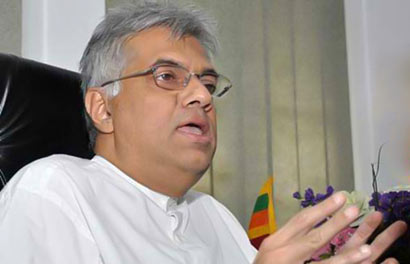Sri Lanka may restrict visitors to its national parks

Sri Lanka may restrict visitors to each of its national parks after a recent spate of vehicular accidents injured and killed wild animals, Prime Minister Ranil Wickremesinghe said here on Wednesday.
In a statement released on his official Facebook page, Wickremesinghe said that the new government was also looking at methods of implementing strict speed limits in order to create an environment that is safe and secure for the wildlife, Xinhuia reported.
The carcass of a young female leopard was found last week inside the Yala National Park, one of Sri Lanka’s oldest and most popular national parks, in what authorities believe was a hit and run case.
In recent months, authorities have received reports of several animals being killed by careless drivers transporting visitors on safari.
“It has recently been brought to light that there has been a spate of vehicular accidents causing disruption and injury to the wildlife at Yala National Park. As an animal lover myself, this matter is very close to my heart,” Wickremesinghe said.
“We are currently looking into how we can implement meaningful measures such as the strict enforcement of speed limits and further restrictions on the rate of visitors to each of our national parks and reserves, in order to create an environment that is safe and secure for all its inhabitants,” he added.
The park attracts more than 100,000 foreign tourists each year and is a key source of revenue to the government.
(IANS)

Latest Headlines in Sri Lanka
- COPE uncovers irregular NMRA certification process March 14, 2025
- Anuradhapura Hospital Director removed following doctor’s assault March 14, 2025
- Popular rapper Shan Putha arrested with firearm March 14, 2025
- Batalanda commission report tabled in Sri Lankan Parliament March 14, 2025
- Female Grama Niladharis withdraw from night duty over security concerns March 14, 2025



We don’t have to invent the wheel. First- policy decisions by the authorities. As there is a new Minister, may be it is a good time to set regulations. Are the parks animal sanctuaries where people are allowed to enjoy nature WITHOUT disturbing nature and animals as they once were or are they money spinners for the Govt and for the jeep owners at ANY cost? I’m sure there are enough experts in the DWL who if instructed to carry out nature friendly polices, this would not happen. If not,the Minister should call experts in the fields to formulate policies and see to it that they are followed and also may be see to plug possible corrupt practices. They can also research methods used in other parks in the region like in India and adapt to Sri Lankan conditions. Ways and means of limiting numbers of vehicles should be seen to. In India, flat bed trucks with 20 seats are given route permits within the park. Also, only a limited number of vehicles are allowed on prescribed routes at given times of the day. This reduces the number of vehicles but not necessarily the number of visitors and therefore minimizes disturbance to animals . A code of conduct for the visitors to be given with the ticket.The vehicles would have to conform to rules and regulations to keep their permits in force such as leaving the park gate at dusk in order not to run over animals after dark. There is a lot more we can learn fro the Indian parks.
In the old days, every vehicle or group of vehicles had to be accompanied by a tracker of the DWL. Within National parks, The park director should implement methods to see that this does not happen again or should be accountable for the deaths of animals run over as this clearly due to mismanagement / neglect of duty. Above all, bring into law the Animal Rights Bill.
It’s about time the powers that be took this menace seriously and restricted ALL vehicular traffic in the wildlife parks and ONLY allowed Jeeps painted in camouflage colours driven by experienced and responsible drivers to take visitors on safari. STOP buses laden with noises visitors, ban all music and mobile phones except one for the driver in case he has to summon help in emergencies. Insist visitors wear camouflage colours, ban flash photography and employ scouts to ensure rules are strictly obeyed and evict those found huilty of breaking them. Otherwise expect a steady decline in wild animal sightings ending in total extinction !